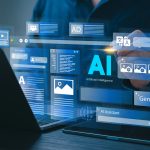How Businesses Use Technology to Operate Efficiently: The Digital Transformation Imperative
In today’s fast-paced market, efficiency often separates thriving enterprises from struggling ones. By strategically integrating cutting-edge technology, companies aren't just improving processes; they are undergoing a digital transformation, fundamentally reshaping how they operate, innovate, and deliver value. From global giants to nimble startups, organizations leverage a suite of digital tools—each serving a distinct purpose in the relentless pursuit of operational excellence, enhanced agility, and sustained competitive advantage.
Cloud Computing: Scalability and Cost Control
Cloud platforms have revolutionized how businesses manage their IT infrastructure. Instead of costly on-premises servers and data centers, firms subscribe to services like Amazon Web Services (AWS) or Microsoft Azure. This shift grants near-unlimited storage, computing power on demand, and a flexible pay-as-you-go billing model, transforming IT from a capital expenditure to an operational one.
- Example: Netflix runs its entire streaming service on AWS. By dynamically scaling servers up or down during peak viewing hours, the company avoids overinvesting in hardware while ensuring smooth playback for millions of subscribers globally.
- Key Impact: Cloud adoption eliminates significant capital expenditures on data centers, allows rapid provisioning of new applications, and enhances global reach and disaster recovery capabilities.
- Challenge: Managing cloud security, ensuring data governance, and controlling spiraling costs in complex, multi-cloud environments require specialized expertise and continuous oversight.
Robotic Process Automation (RPA): Eliminating Repetitive Tasks
Repetitive, rule-based processes are prime candidates for automation. Robotic Process Automation (RPA) tools such as UiPath and Automation Anywhere mimic human interactions with software to complete high-volume, tedious tasks like invoice processing, data entry, and customer onboarding.
- Example: A global bank deployed RPA bots to handle mortgage application intake, cutting manual review time by 75%. This freed employees to redirect their efforts toward more complex underwriting decisions and direct customer service interactions.
- Key Impact: RPA significantly reduces human error rates, accelerates turnaround times for routine tasks, and liberates human staff to focus on strategic, higher-value work that requires critical thinking and empathy.
- Challenge: Successful RPA deployment depends heavily on accurate process mapping, careful change management within the organization, and avoiding the pitfall of automating already inefficient workflows.
Artificial Intelligence (AI) and Data Analytics: Informed Decision-Making
Artificial Intelligence (AI) and powerful analytics platforms transform raw, unstructured data into actionable insights, enabling true data-backed decision-making. Machine learning models uncover hidden patterns in vast datasets—from sales figures and customer behavior to supply-chain performance—enabling highly accurate predictive forecasting and optimization.
- Example: Retail giant Walmart uses AI-driven demand forecasting to optimize inventory levels across its thousands of stores. By precisely predicting which products will sell out and when, the company minimizes costly stockouts and reduces markdown waste, enhancing profitability.
- Key Impact: Data-backed decisions enhance business agility, improve customer satisfaction through personalization, and provide a significant competitive advantage through predictive capabilities and process optimization.
- Challenge: Implementing AI demands access to high-quality, unbiased data, addressing significant data privacy and ethical concerns, and overcoming a persistent shortage of skilled data scientists and AI engineers.
Related: Rob Walton: The Billionaire Walmart Heir Who Quietly Bought the NFL
Collaborative Software: Breaking Down Silos
Modern teams increasingly operate across diverse geographic locations, time zones, and departmental boundaries, making seamless communication and information sharing essential. Tools like Slack, Microsoft Teams, and Asana centralize messaging, file sharing, and task tracking within unified, intuitive interfaces.
- Example: A multinational consultancy migrated its internal communications from scattered email chains to integrated Microsoft Teams channels, reportedly slashing internal meeting time by 30% and significantly accelerating project handoffs between cross-functional teams.
- Key Impact: Centralized collaboration reduces miscommunication, accelerates project delivery, fosters transparency across the organization, and supports flexible work models.
- Challenge: Effective adoption requires overcoming initial employee resistance, managing potential information overload, preventing "digital fatigue," and ensuring seamless integration with other critical business systems.
Internet of Things (IoT): Real-Time Monitoring and Automation
IoT devices extend digital visibility deep into physical operations. Sensors embedded in manufacturing lines, logistics fleet vehicles, smart warehouses, or even agricultural equipment continuously report real-time status data. This constant stream of information enables immediate adjustments, predictive maintenance, and highly optimized physical processes. These capabilities are further amplified by advancements in 5G connectivity (offering higher bandwidth and lower latency) and Edge Computing (processing data closer to the source), which enable faster, more localized decision-making.
- Example: Logistics provider DHL outfits its delivery vans with telematics sensors. The real-time data helps optimize routes dynamically, monitor driver behavior, and schedule preventive maintenance, collectively reducing fuel consumption and minimizing vehicle downtime.
- Key Impact: IoT-driven insights lead to higher asset utilization, lower operational risk, improved customer experience through better service delivery, and the creation of entirely new data-driven services.
- Challenge: Managing the sheer volume of data generated by IoT devices, ensuring the security and privacy of this sensitive operational data, and integrating IoT solutions with legacy systems can be highly complex.
Low-Code/No-Code Platforms: Accelerating Application Development
Low-code and no-code development platforms (e.g., Microsoft Power Apps, Mendix) are empowering businesses to create custom applications and automate workflows with minimal or no traditional coding. These platforms utilize visual interfaces, drag-and-drop functionalities, and pre-built components, allowing business users ("citizen developers") to build solutions rapidly.
- Example: A non-technical human resources department might use a low-code platform to quickly build a custom onboarding portal for new employees, automating document collection and task assignments without waiting for IT development cycles.
- Key Impact: Significantly accelerates the delivery of digital solutions, reduces reliance on overstretched IT departments, fosters greater business agility, and empowers departmental innovation by putting development tools directly into the hands of those closest to the business problems.
- Challenge: While empowering, uncontrolled proliferation can lead to "shadow IT" and governance issues. Proper management and integration strategies are crucial to ensure security, scalability, and adherence to enterprise standards.
Cybersecurity Solutions: Safeguarding Efficiency
With ever-greater digital dependency comes elevated and evolving risk. Advanced cybersecurity technologies—including endpoint protection, intrusion detection systems, zero-trust architectures, and multi-factor authentication—are no longer just about protection; they are fundamental to ensuring continuous, uninterrupted operational efficiency. They shield critical systems and sensitive data from breaches that could paralyze operations, incur massive financial losses, and severely damage reputation.
- Example: A large healthcare network implemented multi-factor authentication and robust network segmentation. As a result, an attempted ransomware attack was quickly contained and stopped before patient records became inaccessible, preserving critical services.
- Key Impact: Robust security prevents costly operational disruptions, protects invaluable intellectual property and customer data, safeguards corporate reputation, and ensures compliance with increasingly stringent regulatory requirements.
- Challenge: The cyber threat landscape is constantly and rapidly evolving, necessitating continuous investment, adaptation to new attack vectors, a skilled workforce, and fostering a strong security culture throughout the entire organization.
Enterprise Resource Planning (ERP): Unified Business Management
ERP systems like SAP S/4HANA and Oracle Cloud unify an organization's core business functions—including finance, human resources, procurement, manufacturing, and supply chain—into integrated, centralized platforms. By consolidating disparate data sources and standardizing processes across departments, companies gain end-to-end visibility and a single source of truth for operational data.
- Example: A global electronics manufacturer consolidated ten regional ERP systems into a single Oracle Cloud instance. This massive undertaking dramatically streamlined operations, reducing its month-end financial close time from 15 days to just five.
- Key Impact: Integrated ERP enables streamlined, consistent workflows, delivers real-time and consistent reporting across the enterprise, facilitates easier regulatory audits, and improves overall resource allocation and planning.
- Challenge: ERP implementations are notoriously complex, expensive, and time-consuming, often encountering significant resistance to change from employees and requiring extensive training and customization.
Conclusion
From the foundational capabilities of cloud computing and the analytical power of AI to the meticulous automation of RPA and the real-time insights from IoT, technology empowers businesses to operate with unprecedented agility and precision. Each digital investment—from collaborative software that connects globally dispersed teams to advanced cybersecurity measures that protect them—contributes to building a resilient, efficient, and innovative enterprise. As market competition intensifies and customer expectations evolve, organizations that strategically embrace the continuous digital transformation journey, wisely integrating these tools and adapting their cultures, will be best positioned not only to innovate and adapt but truly to thrive in the complex global economy.
Related: Inside the Lab: How Unitree Is Engineering the Future of Accessible Robotic Mobility
Related: The Smart Glasses Race: Silicon Valley Bets on AI Eyewear














